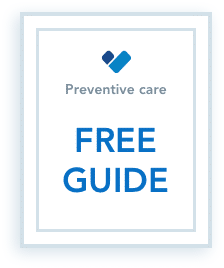Health insurance for freelancers: your guide to enrolling
More than a third of Americans get part or all of their income from freelancing these days as more people look for flexibility in their work lives. Studies project that by 2020, up to half of the American workforce will be self-employed, freelancers, and independent contractors. While freelancing provides freedom and flexibility, it lacks the workplace benefits that come with traditional W-2 jobs. One of the key benefits you’ll have to procure for yourself when you’re self-employed is health insurance. Here’s your guide to enrolling in the best health insurance for freelancers, contractors, and the self-employed.
What health insurance options are available to freelancers?
Freelancers may be able to access health insurance through a spouse or domestic partner who has employer-based coverage allowing dependents to enroll. Freelancers under 26 can stay on a parent’s health insurance plan if that’s available to them, while freelancers who are 65 or older or have certain disabilities can get Medicare. Freelancers may also qualify for Medicaid based on income and/or certain characteristics, depending on the state they live in.
If none of those options are available to you or if what’s available is too expensive, you can also shop for an individual health insurance plan through the Affordable Care Act Marketplace or purchase off-exchange insurance. If you just left a job that had health insurance, you can also opt into COBRA and stay on your old plan; just make sure to consider the pros and cons of COBRA vs. ACA before you make a decision.
Another option is short-term health insurance plans, though experts do not advise using these to replace regular health insurance. This is because short-term health insurance plans do not offer the consumer protections laid out by the ACA. They also don’t count as qualifying insurance because they don’t provide the minimum essential coverage required by the ACA, which means you’ll have to pay a penalty come tax season (more on this below). Lastly, they’re currently limited by law to three-month terms, though the Trump administration is considering changing this.
How much does self-employed health insurance cost?
There’s no way to come up with one answer as to how much health insurance costs for freelancers because it depends on what sort of health insurance options are available to you and what health coverage you need.
However, if you’re interested in an ACA health insurance plan, the average monthly premium for 2018 benchmark Obamacare plans was $411. The benchmark plan refers to the second-lowest cost Silver level plan for a 27-year-old. While that may seem high, buying health insurance through an ACA Marketplace, such as HealthSherpa, allows you to get subsidies if you qualify. And many people do: a HealthSherpa study during 2018 Open Enrollment found that 18 percent of ACA enrollees are paying nothing for their health insurance and 26 percent are paying less than $10 per month. If you make between 100 and 400 percent of the Federal Poverty Line, you’ll likely qualify for at least one of the ACA subsidies (premium tax credit and cost-sharing reductions).
Freelancers are also eligible for another perk that reduces the sting of having to buy your own health insurance: the self-employed health insurance deduction. This “above-the-line” deduction is available to self-employed individuals who buy their own individual health insurance and are not eligible for any other health insurance plan (i.e. a spouse’s). It includes medical, dental, and long-term care insurance premiums for you and your family. You can learn more about the self-employed health insurance deduction here.
Are self-employed individuals required to have health insurance?
For now, yes.
The Affordable Care Act has a provision called the individual mandate. The individual mandate requires almost all Americans to enroll in health insurance coverage that meets certain standards or pay a tax penalty when they file taxes the following year. This has also been called the “individual shared responsibility payment” or “uninsured tax penalty.” In 2017, Congress repealed the individual mandate part of the ACA. But the repeal does not take effect until 2019, so for 2018 you still need to have health insurance unless you fall under one of the exempt groups.
If you don’t, you’ll have to pay a penalty of either 2.5 percent of your household income or $695 per adult and $347.60 per child (up to a family maximum of $2,085), whichever sum is greater. If you think you’d prefer to just pay the penalty, keep in mind that if you go uninsured and have an unexpected medical emergency, the financial dent in your pocket could be much larger. In fact, medical bills are one of the biggest causes of bankruptcies in the U.S.
What is the best health insurance for the self-employed in 2018?
Health care is a personal matter and health insurance laws differ by state, so there’s no way to quantify and rank health insurance plans to tell you which one is the best for all freelancers. But here are some tips on what to consider as you compare your health insurance options.
Health insurance premiums are just one part of healthcare costs, so it’s important to consider aspects other than premiums when comparing insurance plans. First, consider your own health care needs and insurance usage. Do you go to the doctor’s for your annual physical and maybe two or three other times a year, or do you find yourself there more often? Do you need to see a specialist regularly or require a specialty drug? Do you foresee needing a certain surgery or medical treatment? Evaluating and forecasting your own medical needs for the year will help you decide whether you need an HMO, a PPO, or another type of plan. It’ll also help you decide what level of coverage you need (there are five tiers if you get ACA Marketplace insurance).
Next, if you need to see a specific provider, if you travel often or have two homes, or have another special circumstance, dig into whether the options you have will cover what you need. And see if the necessary healthcare providers and facilities are in the insurance plan’s coverage networks, as out-of-network medical care can be very costly.
Then compare your best options and estimate how much health care would cost overall for each one. You should consider the monthly premiums as well as copays, coinsurance, deductibles, and out-of-pocket maximums in accordance with your expected usage. Keep in mind that if you buy an ACA plan and qualify for subsidies, sometimes plans with better coverage will actually have lower premiums thanks to those subsidies.
Once you know the health insurance plan you want, enroll in your plan online or via phone if you’re getting an ACA plan, or follow the instructions you’re given for employer-sponsored plans, Medicare, and other options. For ACA plans, you’ll have to enroll during the annual Open Enrollment Period, unless you have a qualifying life event that allows you to enroll during a Special Enrollment Period.














What an amazing piece of content!! Everything is very well explained with proper examples. If you too want to know more about health plans in Oregon or such services, you can get in touch with the expert at health plans in Oregon.
Fantastic post! I loved everything about this article! Very informative. Thanks for sharing!